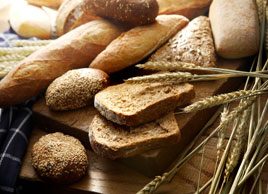What is the Glycemic Index?
Research shows that improving the quality of the carbs you eat can reap major benefits, and all it takes is making some simple exchanges in your daily menu. Here’s how to tell the difference between healthy and unhealthy carbs

Source: Adapted from Food Cures (Reader’s Digest); available in the Best Health shop now.
How to know which carbs to eat
One of the keys to choosing the best carbohydrates is knowing which ones raise blood sugar rapidly and which ones break down slowly. Avoiding the ‘fast-acting’ carbs can help prevent diabetes. The reason: Chronically elevated blood sugar can damage organs and tissue throughout the body, leading to an alarming variety of health problems.
The GI measures how food effects your blood sugar
To identify how different carbohydrates affect blood sugar levels, researchers at the University of Toronto devised the glycemic index (GI) in the early 1980s. The GI is determined by measuring the effect of a food on people’s blood sugar levels. Volunteers are fed whatever serving size of the food equals 50 grams of carbohydrate’to compare it against the effects of 50 grams of pure glucose’and then their blood sugar is measured. Glucose is assigned a GI value of 100.
How the GI works
Jellybeans produce a rise in blood sugar that is 78 percent as high as the increase glucose produces. Jellybeans, then, have a GI value of 78. The closer to 100 a food is ranked, the more it increases blood sugar. (A few foods, such as Jasmine rice and even some baked potatoes, actually rank higher than pure glucose.) As a rule, a GI value under 55 is considered low, 56 to 69 is moderate, and 70 or more is high. That doesn’t mean you can never eat another waffle (76) or bowl of white rice (72). But choosing lower-GI alternatives most of the time could help keep your blood sugar under control.
Critics have charged that the GI is too difficult for the average person to use, since most meals include not only carbohydrates but also fat and protein, which tend to blunt the rise of blood sugar. However, in one recent study, researchers asked volunteers to eat 14 different typical meals (such as bagels and cream cheese with orange juice, for example), then measured the change in their blood sugar levels. They found that the GIs of the foods in each meal were about 90 percent accurate in predicting how much the volunteers’ blood sugar levels changed, according to a study in the American Journal of Clinical Nutrition.
Using the glycemic load
Some scientists and nutritionists prefer to use a fine-tuned version of the glycemic index known as the glycemic load (GL), which takes into account the amount of carbohydrate in a typical serving of the food instead of however much you’d need to eat to get to 50 grams. The GL turns some seemingly ‘unhealthy’ foods) according to the GI) ‘healthy’ again. For example, watermelon has a high GL (76) but a low GL (4). That’s because you’d have to eat about 6 cups to consume 50 grams of carbohydrate, whereas a more typical serving is about ¾ cup.
Don’t miss out! Sign up for our free weekly newsletters and get nutritious recipes, healthy weight-loss tips, easy ways to stay in shape and all the health news you need, delivered straight to your inbox.




